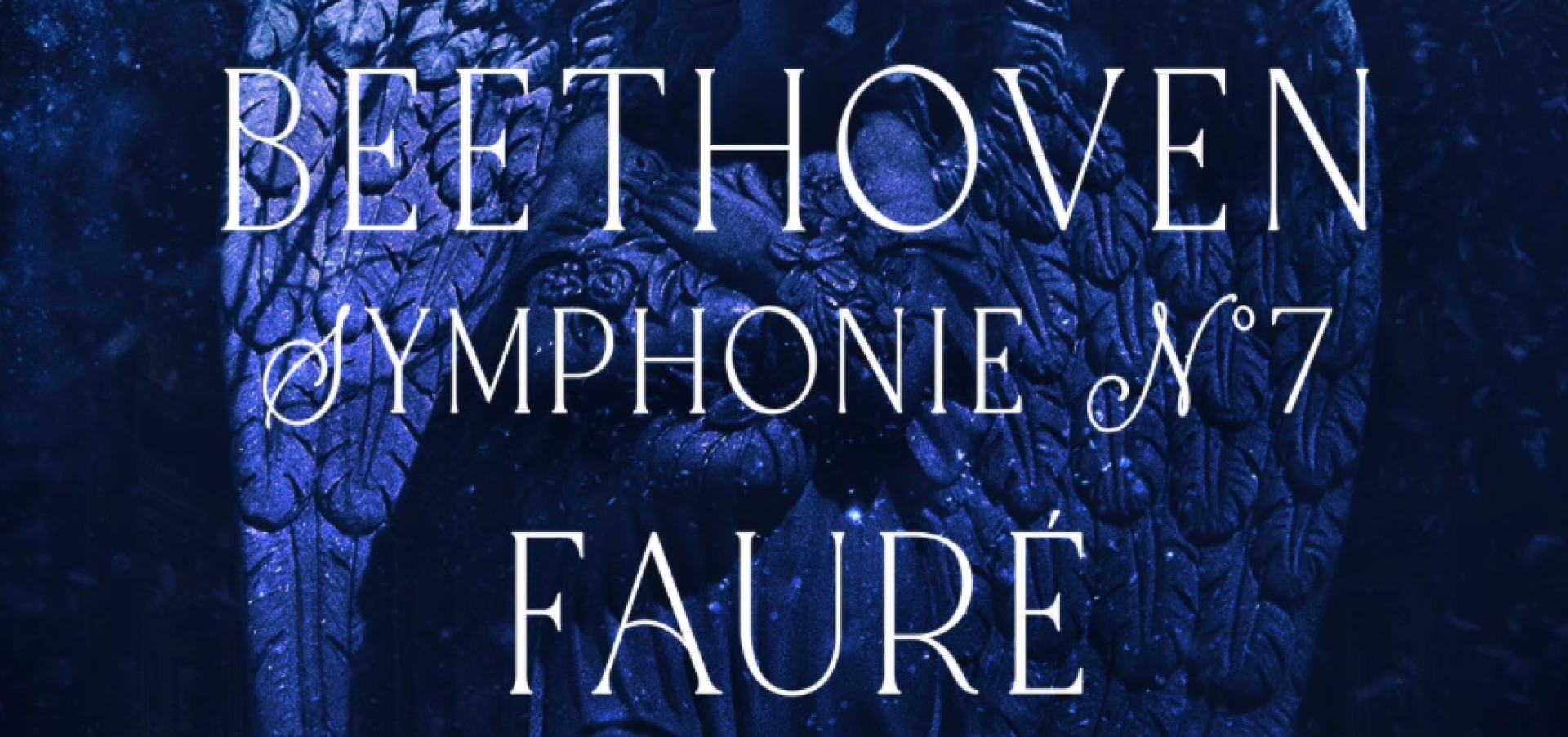Requiem by Fauré, 7th by Beethoven
Mo | Tu | We | Th | Fr | Sa | Su |
Fauré's Requiem in D minor op. 48 by Gabriel Fauré, written in full maturity, is one of his most famous works.
It was created on January 16, 1888 in the Church of the Madeleine. This mass for the dead is considered one of Fauré's masterpieces and one of the finest requiems of the 19th century. The work, whose writing is very personal, contains several pieces that can be ranked among the most moving of Western choral music.
Symphony No. 7 is built according to a progression where the rhythm plays the leading role, more than the melody, giving the whole work a dancing character and a certain vigor.
Dynamic and eclectic, the Hélios orchestra has established itself since its creation in 2014.
Its artistic director, Paul Savalle, promotes the professional integration of young musicians through orchestral practice. Thus, young graduates mingle with orchestral musicians, conductors and experienced soloists, in optimal working conditions.
From baroque music to contemporary music, the programs are varied, the repertoire is both symphonic and choral, the orchestra joining the departmental and regional choirs.
Thanks to the collaboration with different conductors, the musicians approach a very rich repertoire by broadening their palette of interpretation. They all come from major French conservatories, some belonging to a national orchestra.
From the string quartet to the symphony orchestra, via the brass ensemble, the orchestra always expands its audience by modulating its composition. The “strings” formation performs in the most prestigious churches in Paris, which allows the public to discover a very rich architectural heritage.
Its variable geometry training allows the Hélios orchestra to approach a very wide repertoire with passionate curiosity.
Program and cast
Orchestre: Hélios
Chœur: Hélios Ephémère
Direction: Xavier Saumon
Church of the Madeleine
The parish of La Madeleine wishes to ensure a visible presence in the heart of Paris and to be attentive to our contemporaries. We speak of the base to describe the stone massifs that form the foundation of the church. But this base is also made of living stones made up of associations attentive to the wounded of life such as Ozanam Madeleine, the Espace Formation Informatique. The Foyer de la Madeleine serves more than three hundred meals every day at lunchtime with the aim of encouraging people to meet people who work or spend time in the neighbourhood.

 EN
EN DE
DE IT
IT FR
FR ES
ES RU
RU JP
JP RO
RO
